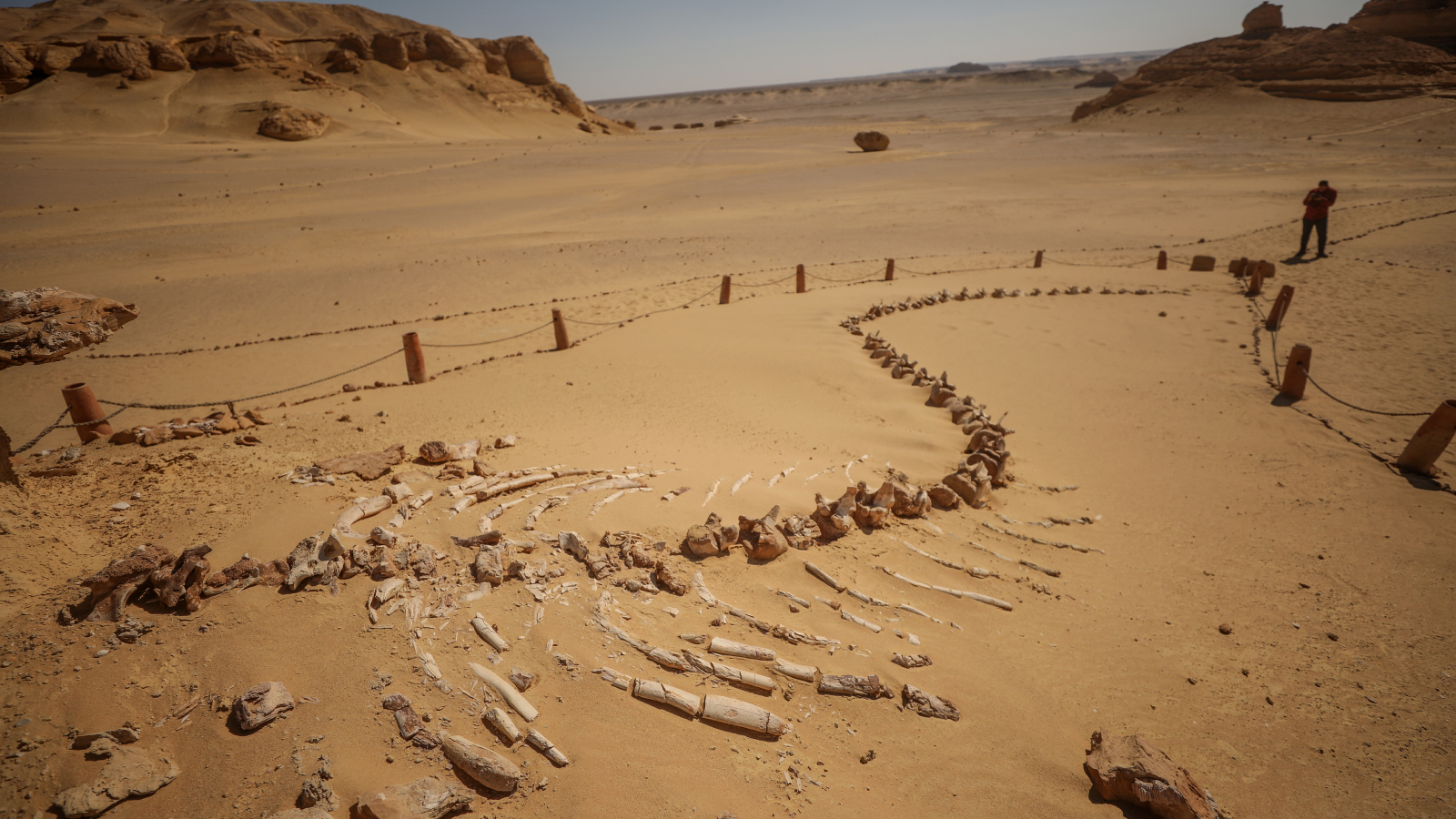In the heart of Egypt’s Western Desert lies a remarkable testament to Earth’s evolutionary history: Wadi El-Hitan, known as the Valley of the Whales. This UNESCO World Heritage site, once submerged beneath the ancient Tethys Ocean, now serves as a vast open-air museum displaying the fossilized remains of primitive whales that roamed the seas during the late Eocene epoch, approximately 55.8 to 33.9 million years ago.
The Valley of the Whales is renowned for its treasure trove of ancient marine fossils, including over 400 whale skeletons, some of which intriguingly possess preserved feet and toes. These fossils offer a unique glimpse into the evolutionary journey of whales from land-dwelling creatures to the ocean giants we know today.
The Evolutionary Significance of Whale Valley
According to UNESCO, the fossils found in Wadi El-Hitan represent a significant chapter in the story of evolution. They illustrate the transition of whales from terrestrial to aquatic life forms, a process that has fascinated scientists and paleontologists for decades. The site’s importance was further underscored in 2005 when UNESCO designated it a World Heritage site following the discovery of a near-complete Basilosaurus isis skeleton.
“These fossils represent one of the major stories of evolution: the emergence of the whale as an ocean-going mammal from a previous life as a land-based animal,” UNESCO’s website states.
The first major discovery in the valley occurred in 1902 with the unearthing of Basilosaurus isis, a species that could reach lengths of up to 60 feet. This ancient predator likely fed on smaller whales, using its long snout and sharp teeth to crush skulls before consumption, as highlighted in a 2019 study led by Manja Voss of the Berlin Museum of Natural History.
Remarkable Discoveries and Ongoing Research
While the discovery of B. isis was groundbreaking, it was the 1989 excavation by a team from the University of Michigan and the Egyptian Geological Museum that truly captured the scientific community’s attention. They found B. isis skeletons with hind limbs, feet, and toes, providing concrete evidence of the evolutionary transition from land to sea.
Modern whales lack hind limbs, yet they retain pelvic bones, a vestige of their terrestrial ancestry. The fossils in Whale Valley are among the oldest known archaeocetes, a group of mammals from the Eocene that eventually evolved into modern-day whales and dolphins.
According to a 2023 review, “Researchers continue to find new fossils and learn more about the geology of the area,” underscoring the site’s ongoing scientific value.
Preservation and Protection of a Natural Wonder
Whale Valley’s fossils have been remarkably preserved, thanks in part to the region’s arid climate since the Pliocene epoch. This natural preservation has allowed paleontologists to uncover not only whale skeletons but also the remains of ancient Eocene turtles, bony fishes, sharks, rays, crocodiles, sea cows, and shellfish.
The site operates as an open-air museum, complete with a visitor center and accessible pathways for tourists. However, it remains strictly protected to ensure the preservation of its invaluable fossils. The Egyptian government, in collaboration with international researchers, continues to study the site, providing insights into both the Earth’s geological history and the evolutionary processes that have shaped life on our planet.
Looking Ahead: The Future of Whale Valley
As research continues, Wadi El-Hitan stands as a testament to the dynamic history of life on Earth. It offers a rare opportunity to study the evolutionary adaptations of marine mammals and the environmental changes that have occurred over millions of years. The site not only attracts scientists and researchers but also educates the public about the rich tapestry of life that once thrived in what is now a desert landscape.
With ongoing protection and research, Whale Valley will continue to reveal the secrets of our planet’s past, inspiring future generations to explore and understand the intricate history of life on Earth.





































































